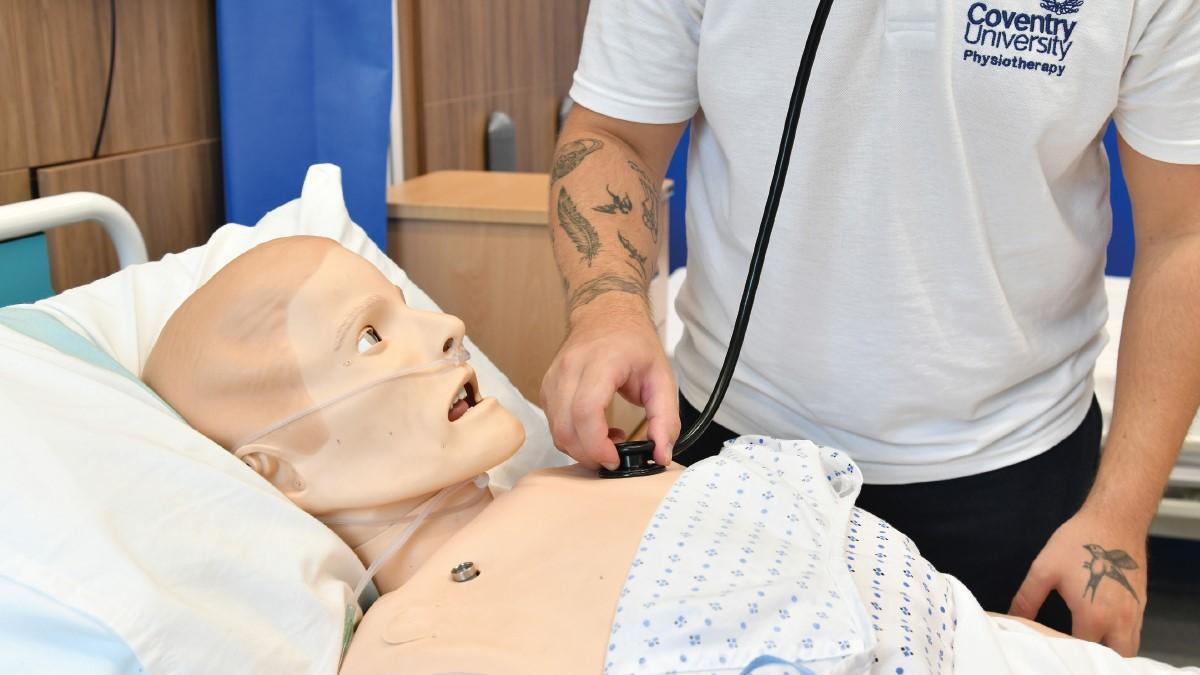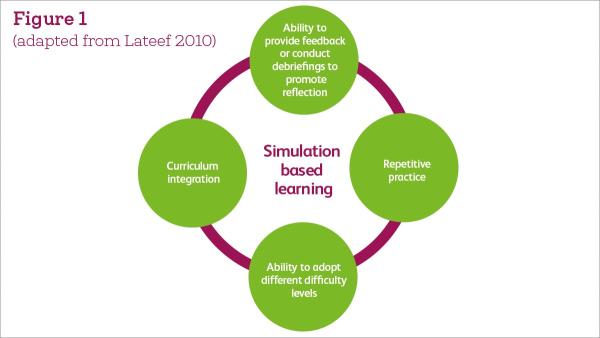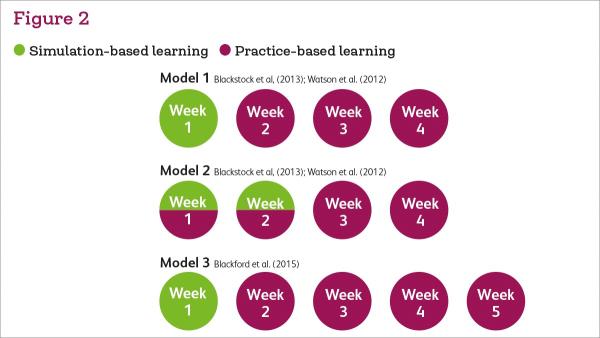Dr Nicola Heneghan introduces the physiotherapy simulation toolkit and explains how it can be used to support learner preparation for practice

A scoping review of contemporary approaches to practice-based learning, with a specific focus on simulation-based learning (SBL) was included as part of KNOWBEST (KNOWledge, BEhaviours and Skills required of the modern physioTherapy) graduate project, led by Dr Catherine Minns Lowe at the University of Hertfordshire.

The review identified a modest, but highly relevant body of literature examining stakeholder acceptability and the appropriateness of simulation within pre-registration physiotherapy education. Combining the favourable findings from this review with an acknowledged chronic shortfall in clinical placements, a recommendation from the KNOWBEST project was for the CSP to ‘commission a simulation toolkit to expedite the adoption of models of practice involving simulation and related activities through rapid dissemination’.
SBL offers considerable potential as an evidence-based adjunct or substitute for existing clinical practice-based learning (PBL). While some education providers of physiotherapy education have for some time engaged with SBL, others have less experience and a simulation toolkit was needed as a profession-specific resource to expedite greater engagement in and use of SBL.
What is simulation?
SBL is an educational approach, that allows interactive, and at times immersive, activity by recreating all or part of clinical experience. A range of modalities exist (actor role players, standardised patients, human computerised manikins, virtual reality and so on) to help replicate suitably realistic clinical scenarios, so that specific learning outcomes can be achieved.
Why use simulation in physio student education?
To support pre-registration physiotherapy students’ development of knowledge, skills, attributes, and behaviours in preparation for PBL and/or professional practice (see figure 1).
Not only has demand for PBL opportunities grown, but Covid-19 has further highlighted the importance of high quality and equitable learning opportunities so that students can demonstrate fulfilment of HCPC Standards of proficiency.
Adjunctive or substitutional SBL could help:
- standardise learning to ensure all students are offered similar educational opportunities and exposure for professional practice preparation (for example ICU).
- support learner preparation in advance of clinical practice-based learning (PBL) using adjunctive SBL
- enhance safety in less common but important clinical scenarios (for example assessment of red flags).
- professional practice preparation where PBL capacity is limited (for example paediatrics).
SBL is already integral to some healthcare professions’ educational curriculum. The UK Nursing & Midwifery Council endorses SBL for 300/2,300 required hours, Australia Occupational Therapy accreditation standards endorse 200/1,000 PBL hours.
Why a pre-registration physio education toolkit?

While there are numerous guidance documents, policies, and resources on SBL, none are specific to physiotherapy or designed for pre-registration education. Drawing on empirical evidence, profession-specific expertise, and examples of best practice, it is hoped that this ‘shared’ learning will further promote the use of and integration of SBL in pre-registration physiotherapy education.
A central resource repository within a professional specific toolkit may expedite and support implementation of SBL in pre-registration education; thereby enhancing physiotherapy student preparedness and easing pressures on placement providers.
For more information email education@csp.org.uk or our enquiries team at enquiries@csp.org.uk
Physiotherapy simulation toolkit development and content
The toolkit is designed and constructed by SBL experts from within and outside the physiotherapy profession. A working group with wider membership and the KNOWBEST steering group were consulted throughout to inform structure and content validation, with ASPiH executive committee members providing feedback.
The toolkit draws on educational theory, profession-specific empirical evidence, best practice guidelines, standards (INACSL) as well as clinical and academic expertise, providing a wealth of resources to help physiotherapy education providers design and deliver SBL within their programmes.
Comments from co-authors with expertise in SBL
This new simulation toolkit has been developed to support educators and clinicians in how to develop, implement and evaluate simulation within physiotherapy. We now have a unique opportunity for the profession to expand its use of simulation and to synthesise outcomes from research to create a unique evidence-base for physiotherapy in the UK. Debbie Thackray, Southampton University
Simulation is used to enhance student engagement and student experience, as well as to bridge the theory to practice gap in areas where the students need to practise applying their skills in context, maximising transferable skills in areas that are more complex and less familiar to them. Robyn Stiger, Oxford Brookes University
SBL is increasingly being used in PG education too, both formally in an HEI setting, but also within provider organisations. Some provider organisations are also using simulation as part of significant incident investigations, during the design process of new buildings and to test out guidelines/standard operating procedures prior to their implementation. Therefore, it would be beneficial for all physios to have an understanding of what SBL is and to consider what role SBL might have in their workplace. Jo Jennings, Coventry University
Find Out More
Number of subscribers: 2




































